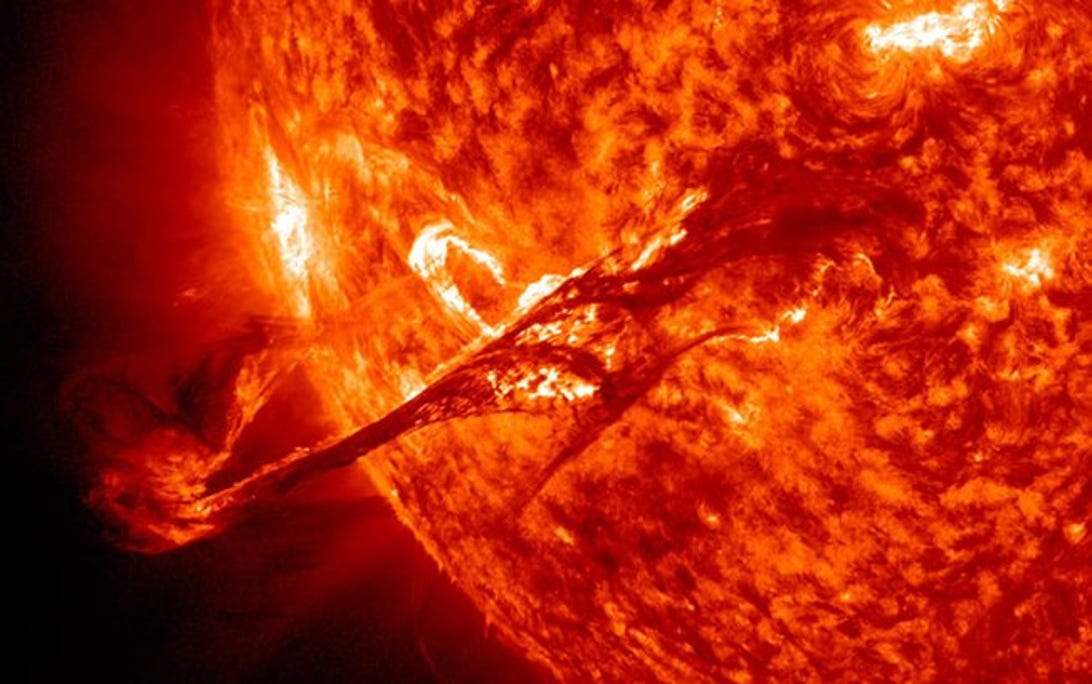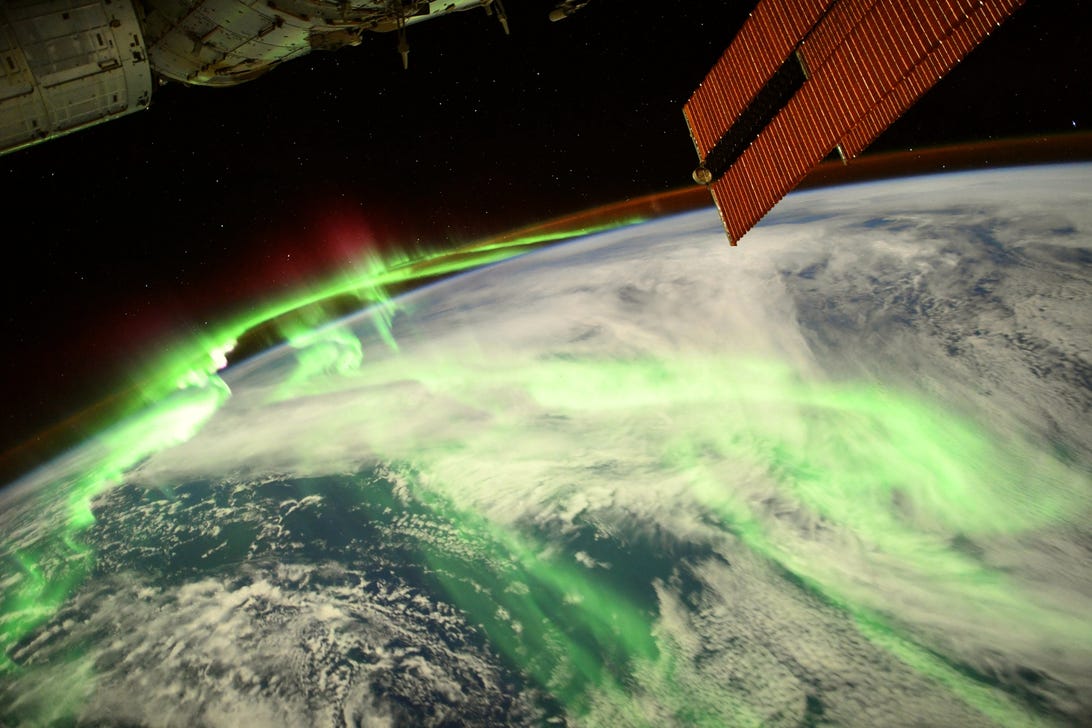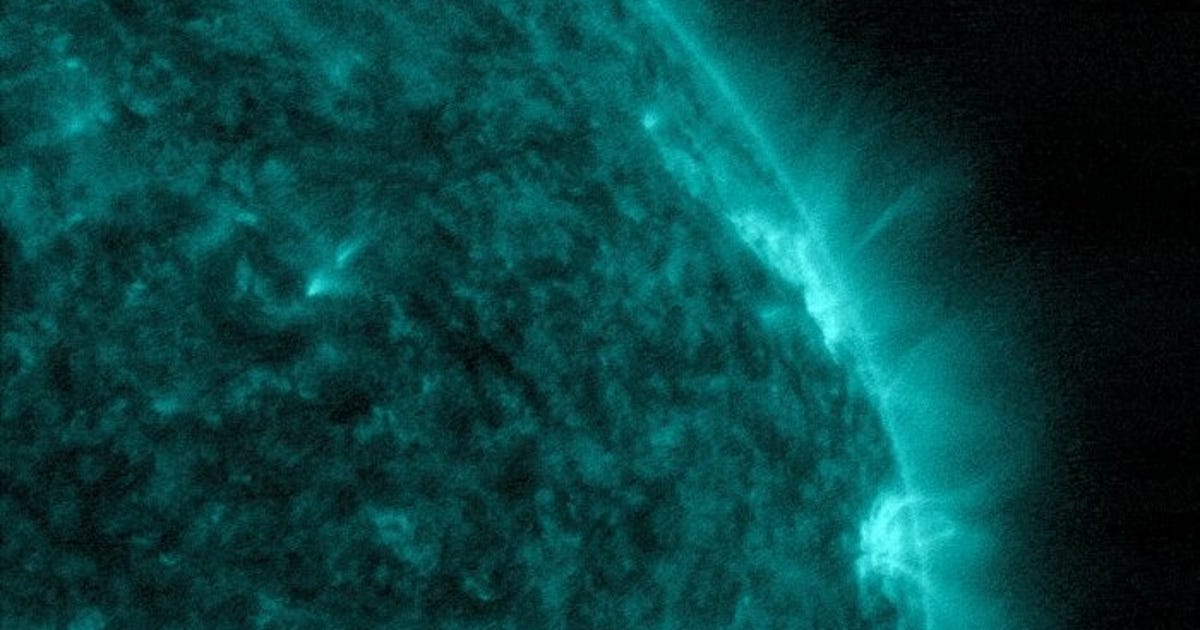The solar emitted a midlevel sun flare on Jan. 20, 2022, peaking at 1:01 a.m. EST. NASA’s Sun Dynamics Observatory, which watches the solar continuously, captured a picture of the development.
NASA/SDO
On Thursday, our solar launched its pent-up power within the type of a bit of magnetic bomb. It is known as a sun flare, and NASA stuck the entire thing on digicam.
Sun flares, which might be unexpected explosions at the solar’s floor led to through sturdy magnetic forces, are of shock to astronomers as a result of those occasions can have an effect on electric energy grids on Earth, inflicting regional blackouts. Additionally they chance interference with radio communications.
“This tournament, specifically, disrupted radio communications over the Indian and Pacific oceans — so its most probably largest have an effect on was once a disruption of maritime communications,” mentioned Jesse Woodroffe, a program scientist and professional in area climate at NASA.
Much more jarring is that if astronauts are within the flares’ line of fireside, such detonations would possibly very much threaten area traveler and spacecraft protection. The excellent news, despite the fact that, is NASA categorised the hot flare as a class M5.5 midlevel eruption, which corresponds to each a average severity and radio blackout risk for the aspect of the planet dealing with the burst.
“It is not exceptionally sturdy within the grand scheme of items,” Woodroffe mentioned, “however it nonetheless could have important results relying on what portion of the Earth is sunlit on the time of the flare.”
For now we will simply sit down again and appreciate the impressive symbol captured through the company in “excessive ultraviolet gentle,” colorized in a fully captivating teal blue.
Round 300 M-class flares happen throughout every sun cycle, and they are possibly to happen close to sun most, some extent we are frequently drawing near, in step with Woodroffe. “Presently that is shaping as much as be a a lot more energetic and engaging sun cycle than the final one. That signifies that we might be in retailer for sun task the likes of which we have not observed in just about twenty years.”
You’ll see the sun flare’s flash at the proper aspect.
NASA/SDO
What reasons a sun flare?
As an alternative of a sparkling orb, call to mind the solar as an enormous, flaming, round ocean. This ocean is so ridiculously sizzling, at 5,778 Kelvin (9940.73 Fahrenheit), that would-be atoms at the famous person are utterly blasted aside right into a gaseous mix of ions and electrons known as a plasma.
Those debris, with various sure and destructive fees, paintings in combination to shape the solar’s magnetic box traces, thereby deciding how the boiling ocean strikes round. Recall to mind it as a kind of immensely sturdy, magnetic soup — extra exactly, image a hen noodle soup. The noodles are the solar’s magnetic fields.
On the other hand, simply as stirring your soup on the lookout for a child carrot can tangle your noodles, those charged-up, magnetic traces can develop tangled, maximum frequently close to sunspots. Ultimately, as areas of the spaghetti-like magnetic fields shape advanced knots and push and pull on every different, they revel in an power overload.
That forces them to blow up into area, revealing a fiery loop at the aspect of our huge famous person, known as a sun flare.

The solar despatched out an enormous sun flare in August of 2012
AIA/SDO/Goddard House Flight Middle/NASA
“There could also be a possible for sun flares to cluster, that means the incidence of 1 may presage the semblance of extra, probably more potent flares,” Woodroffe mentioned. “Thus, tracking for occasions similar to that is necessary as it might be the precursor of one thing extra severe.”
And occasionally, the fiery loop stretches out till it turns into taut sufficient to kind of snap off, leading to a coronal mass ejection. “A coronal mass ejection is, in essence, a bit of little bit of the solar that will get blown off and despatched flying into area in opposition to Earth,” Woodroffe mentioned.
As soon as it snaps off, the ejected portion heads without delay towards our planet, selecting up space-borne debris alongside the way in which and inflicting what is known as a sun hurricane. Fortunately, Earth’s environment protects us from the brunt of the charged debris, with most effective fairly few getting stuck in our planet’s protect. When that occurs, despite the fact that, we glance up at those trapped, zippy debris in awe.
They seem to us because the Northern Lighting.
“I have no idea if there was once a coronal mass ejection related to this flare, however we expect the imaginable arrival of a coronal mass ejection related to a flare that took place on Jan. 18,” Woodroffe mentioned. “So, despite the fact that it is not on account of this flare, lets really well see some great auroras this weekend.”

ESA astronaut Thomas Pesquet captured a stunner of a view of an aurora throughout a complete moon in September 2021.
Thomas Pesquet/ESA

